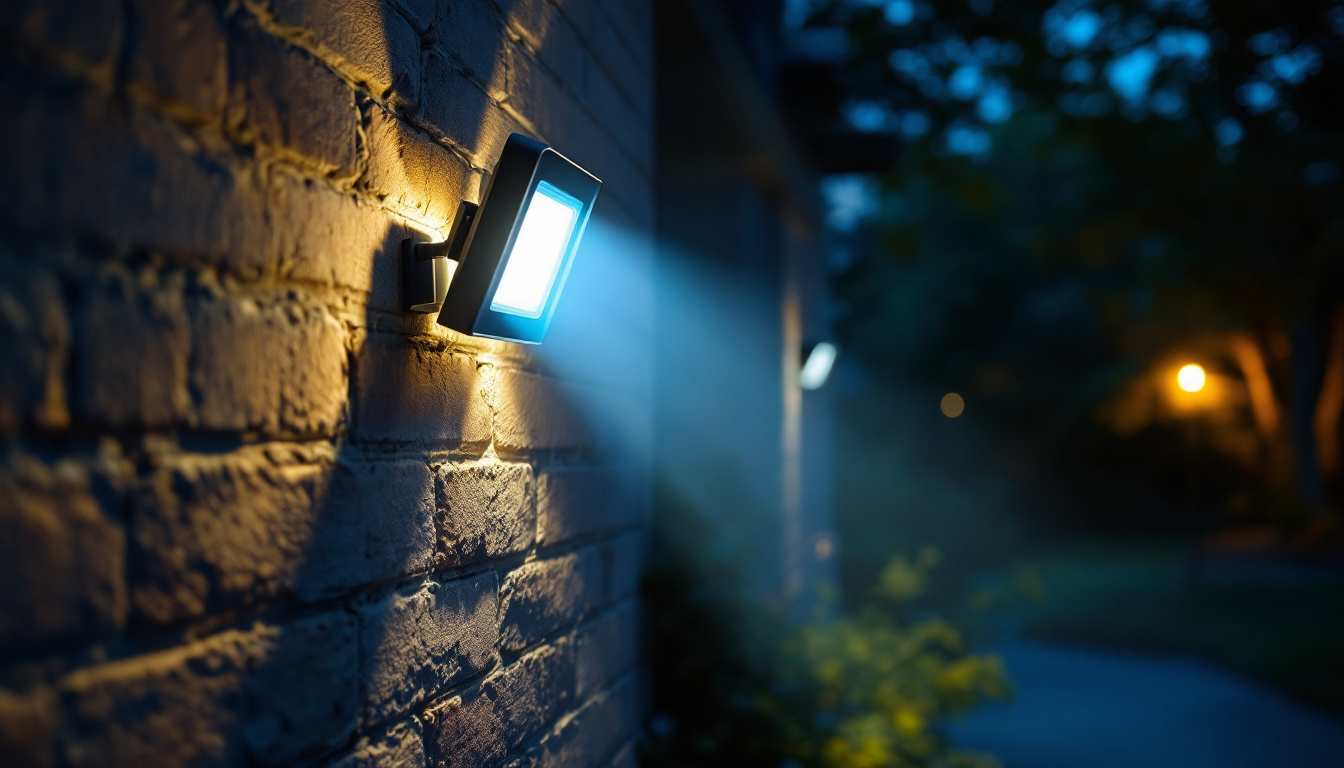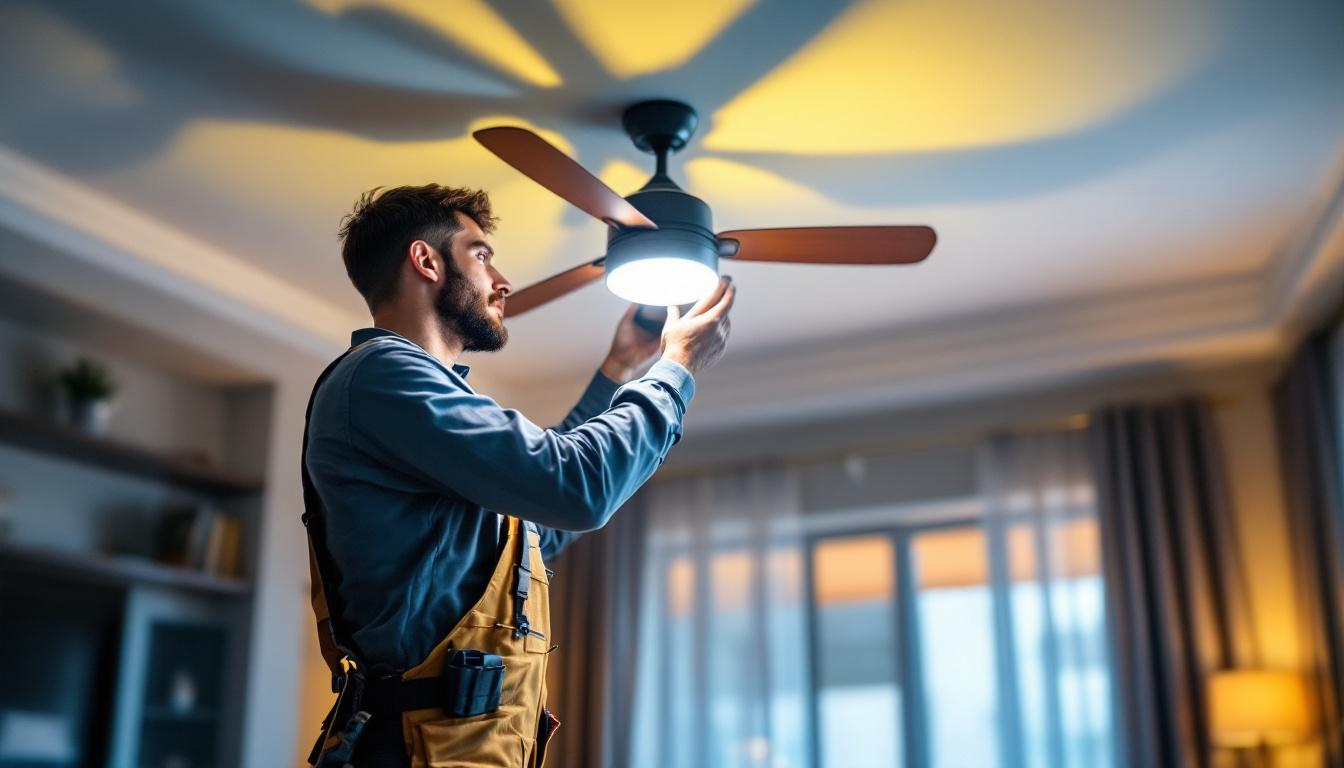
In the realm of outdoor lighting, motion-sensitive flood lights have emerged as a popular choice for both residential and commercial applications. These versatile fixtures not only enhance security but also provide convenience and energy efficiency. For lighting contractors, understanding the best practices surrounding the installation and maintenance of motion-sensitive flood lights is essential for delivering quality service to clients. This article explores key considerations, installation techniques, and maintenance tips that can help contractors excel in their projects.
Motion-sensitive flood lights are designed to illuminate areas automatically when they detect movement. This feature is particularly beneficial for enhancing security in outdoor spaces, as it can deter potential intruders and provide visibility when needed. These lights typically utilize passive infrared (PIR) sensors or microwave sensors to detect motion.
There are primarily two types of motion sensors used in flood lights: passive infrared (PIR) sensors and microwave sensors. PIR sensors detect changes in infrared radiation, which occurs when a warm body, such as a person or animal, moves within their range. They are energy-efficient and ideal for detecting movement in residential settings.
On the other hand, microwave sensors emit microwave signals and measure the reflection of those signals to detect motion. They are more sensitive than PIR sensors and can cover larger areas, making them suitable for commercial applications. Understanding the differences between these sensors can help contractors recommend the right type of flood light for specific client needs. Furthermore, some advanced models combine both types of sensors, providing a dual-layer of detection that enhances accuracy and reduces false alarms, making them an excellent choice for high-traffic areas.
The advantages of installing motion-sensitive flood lights are numerous. Firstly, they provide enhanced security by illuminating dark areas when motion is detected, making it less likely for intruders to approach unnoticed. Secondly, they contribute to energy savings, as the lights only activate when necessary, reducing electricity consumption.
Additionally, these lights offer convenience for homeowners and business owners alike. For instance, individuals returning home late at night can benefit from automatic lighting that guides their path, while businesses can ensure safety for employees and customers after hours. Beyond security and convenience, motion-sensitive flood lights also play a role in improving the overall safety of outdoor spaces. By illuminating driveways, walkways, and parking lots, they help prevent accidents and falls, particularly in poorly lit areas. Moreover, many modern flood lights come equipped with adjustable settings, allowing users to customize the sensitivity and duration of the light activation, ensuring they meet specific needs and preferences.
Proper installation is crucial for the effective performance of motion-sensitive flood lights. Contractors should adhere to several best practices to ensure optimal functionality and client satisfaction.
When installing motion-sensitive flood lights, selecting the appropriate location is vital. The lights should be positioned to cover critical areas such as entry points, driveways, and walkways. Additionally, they should be mounted at a height that maximizes their detection range while minimizing the risk of vandalism.
It is also important to consider the surrounding environment. Avoid placing lights near objects that could obstruct the sensor’s view, such as trees or fences. Ideally, the lights should have a clear line of sight to detect movement effectively. Furthermore, evaluating the natural light conditions in the area can guide placement; for instance, areas that are already well-lit during the night may not require as many flood lights, allowing for a more strategic deployment that focuses on darker, more vulnerable spots.
Most motion-sensitive flood lights come with adjustable settings for sensitivity and duration. Contractors should take the time to configure these settings based on the specific needs of the installation site. For instance, in a residential area, the sensitivity may need to be lower to prevent false triggers from passing cars or animals.
Furthermore, the duration setting controls how long the light remains on after detecting motion. This should be adjusted to provide adequate illumination without causing inconvenience to the client. A typical duration range is between 30 seconds to 5 minutes, depending on the application. Additionally, some advanced models offer features such as dusk-to-dawn sensors, which can further enhance energy efficiency by ensuring that lights are only activated when truly necessary, thus prolonging the lifespan of the bulbs and reducing electricity costs.
Electrical safety is paramount when installing motion-sensitive flood lights. Contractors should ensure that all wiring complies with local electrical codes and regulations. It is advisable to use weatherproof fixtures and connectors to protect against moisture and environmental factors.
Additionally, consider using a dedicated circuit for the flood lights, especially in commercial applications where multiple units may be installed. This helps prevent overloads and ensures reliable operation. Proper grounding is also essential to avoid electrical hazards. Beyond basic wiring, it may be beneficial to incorporate surge protection devices to guard against voltage spikes, particularly in areas prone to thunderstorms. This extra layer of protection can significantly extend the life of the lighting system and provide peace of mind to the client, knowing that their investment is safeguarded against unpredictable weather conditions.
Regular maintenance of motion-sensitive flood lights is crucial for ensuring their longevity and performance. Contractors should educate clients on the importance of upkeep and provide guidance on how to maintain their lighting systems effectively.
Over time, dirt, dust, and debris can accumulate on the lenses of motion-sensitive flood lights, reducing their effectiveness. Contractors should recommend that clients clean the fixtures regularly to maintain optimal performance. A simple solution of mild soap and water can be used to wipe down the lenses, ensuring that they remain clear and unobstructed.
In addition to cleaning the lenses, it is also important to check for any signs of corrosion or damage to the fixture itself. If any issues are detected, timely repairs or replacements should be made to avoid further complications. Furthermore, clients should be encouraged to inspect the mounting hardware, as loose screws or brackets can lead to misalignment and reduced functionality. Ensuring that all components are secure will not only enhance performance but also extend the lifespan of the flood lights.
Regular testing of the motion sensors is essential to ensure they are functioning correctly. Contractors should advise clients to periodically walk through the detection zone to confirm that the lights activate as expected. If the lights fail to respond, it may indicate a need for recalibration or replacement.
Moreover, clients should be informed about the potential for environmental factors to affect sensor performance. For example, heavy rain or snow may obstruct the sensor’s view, so adjustments may be necessary during such conditions. Additionally, vegetation growth can interfere with sensor detection; therefore, it is advisable to keep surrounding areas trimmed and clear of obstructions to maintain optimal sensor functionality. This proactive approach not only ensures reliable lighting but also enhances safety around the property.
As technology advances, lighting solutions continue to evolve. Contractors should stay informed about the latest developments in motion-sensitive flood lights, including energy-efficient LED options and smart technology integrations. Upgrading older systems can enhance performance and provide clients with modern features such as smartphone control and programmable settings.
Incorporating smart technology can also allow for remote monitoring and adjustments, giving clients greater control over their lighting systems. Features like scheduling and motion sensitivity adjustments can be customized to fit the specific needs of the property, enhancing both security and convenience. Furthermore, educating clients about the energy savings associated with modern lighting solutions can encourage them to invest in upgrades, as these advancements not only improve functionality but also contribute to lower energy bills and a reduced carbon footprint.
Even with proper installation and maintenance, motion-sensitive flood lights can encounter issues. Being prepared to address these common problems can enhance a contractor’s reputation and client satisfaction.
One of the most frequent complaints regarding motion-sensitive flood lights is false triggering. This can be caused by various factors, including wind, passing vehicles, or small animals. Contractors should ensure that the sensitivity settings are appropriately adjusted during installation to minimize such occurrences.
If false triggers persist, it may be necessary to reposition the sensor or consider a different type of sensor that is less susceptible to environmental disturbances. Educating clients about the factors that can lead to false triggers can also help manage their expectations.
Inconsistent lighting can be frustrating for clients. If the flood lights do not activate consistently, it may indicate issues with the sensor or wiring. Contractors should conduct thorough inspections to identify any potential problems.
Checking the power supply and ensuring that all connections are secure can often resolve the issue. If the problem persists, it may be necessary to replace the sensor or consult the manufacturer for further troubleshooting assistance.
While motion-sensitive flood lights are designed to be energy-efficient, clients may still express concerns about their energy consumption. Contractors can alleviate these worries by providing information on how these lights operate and the benefits of using LED technology.
Additionally, educating clients about the importance of proper settings and placement can help optimize energy use. Encouraging clients to consider solar-powered options can also be a sustainable alternative that reduces electricity costs.
Motion-sensitive flood lights are an invaluable addition to outdoor lighting solutions, offering security, convenience, and energy efficiency. For lighting contractors, understanding the nuances of installation, maintenance, and troubleshooting is essential for delivering exceptional service. By adhering to best practices and staying informed about technological advancements, contractors can ensure that their clients receive the highest quality lighting solutions tailored to their needs.
As the demand for effective outdoor lighting continues to grow, contractors who prioritize these best practices will not only enhance their reputation but also contribute to safer and more illuminated communities.
Ready to elevate your lighting installations with the best in motion-sensitive flood lights? Look no further than LumenWholesale, where we provide contractors with superior, spec-grade lighting products at unbeatable wholesale prices. Say goodbye to local distributor markups and hello to high-performance lighting that meets the highest industry standards. With our hassle-free bulk buying and free shipping, you can ensure your projects shine with quality and affordability. Don’t compromise on excellence—choose LumenWholesale for Wholesale Lighting at the Best Value and make your next project a beacon of success.

Discover expert insights from a leading ceiling fan supplier and lighting contractor.

Discover the essential best practices for manufacturing lighting fixtures tailored specifically for lighting contractors.

Discover the essential differences between ballasts and drivers in lighting systems.

Explore the advantages and challenges lighting contractors face when working with the General Electric Distribution Center.